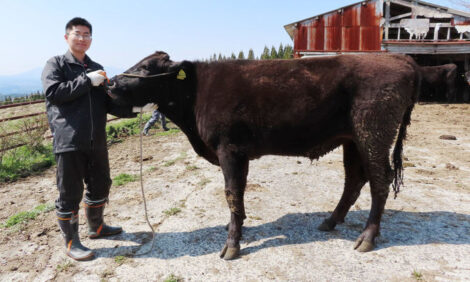



Growth Outlined at World Dairy Summit
GLOBAL – World dairy markets deteriorated this year amid pressure from cereal and soybean prices, although production was reported as ‘dynamic’ across most regions.This is the message of The World Dairy Situation 2013 report, released at this week’s World Dairy Summit in Yokohama, Japan, which said that, despite a price rally in the second half of 2012, prices were lower than 2011.
The report, compiled by the International Dairy Federation, also stressed the effect of farm margins on dairy economics on sector performance over the last year.
The Summit looked at addressing this issue through devoting special discussion time to farm-level margins and policy options therein.
A further concern was that food safety could risk limiting milk supply to Asia.
“Consumer confidence in the role and value of milk and dairy products has wavered since the latter half of the 20th Century,” said Kenichi Unno, President of the Japanese National Committee of IDF.
“We would like to utilize the IDF World Dairy Summit 2013 to gather scientific evidence, visualize the benefits of milk and dairy products and rebuild consumer confidence.”
But, while the short term has been challenging, processors remain bullish about the future, as milk demand increases across new markets.
Chief Executive Officers (CEO) of both Saputo and Fonterra agree that the best opportunities lie in urbanising areas.
“Consumption is evolving with wealth,” stated Dino Sbarba. “The worldwide trade of dairy products is increasing and infrastructure is developing to serve increasing demand.”
For this reason, Mr Sbarba sees the dairy industry growing over the next ten years.
“It will grow, international trade will increase, efficient processors will thrive and consumers will benefit from technological advancements.”
Processors are directing efforts into pushing new products onto the market. Infant milk replacers, high protein sports drinks and logistical improvements such as storage technologies are examples of how processors are looking to expand.
Saputo’s recent innovation is Milk2Go Sport, a protein enhanced sports recovery beverage, this is a source of pride for the company, said Mr Sbarba.
But he added: “There is no simple answer as to what consumers are looking for. What is certainly true in each market is that food safety, value of the experience and nutrition are key elements.”
Fonterra CEO, Theo Spierings, said dairy nutrition for the young and old are the two biggest growth categories, and that demand will outstrip New Zealand supply expansion, forecast at 2-3 per cent.
He said: “Paediatric nutrition is the world's fastest-growing dairy category. Another focus is dairy nutrition for the old. The third growth area is that of foodservice.”
Learning more about young peoples' interest in milk is the intention of Yasuhiro Yoshida, a Japanese dairy farmer.
His education project has been running for 20 years at his 80 cow farm in the Chichibu mountains.
Over 2,000 children visit the farm are taught basic lessons around cows and milk production and the link between meat and milk.
Young people are potentially ‘powerful supporters’ of the dairy industry, Mr Yoshida believes. He is in attendance at the World Dairy Summit this week to discuss his experiences of Japanese children and the potential demand on dairy.
Photo Courtesy of the IDF
Michael Priestley
News Team - Editor
Mainly production and market stories on ruminants sector. Works closely with sustainability consultants at FAI Farms



